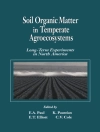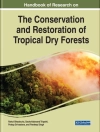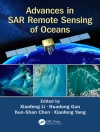Energy Balance Climate Models
Written by renowned experts in the field, this first book to focus exclusively on energy balance climate models provides a concise overview of the topic. It covers all major aspects, from the simplest zero-dimensional models, proceeding to horizontally and vertically resolved models.
The text begins with global average models, which are explored in terms of their elementary forms yielding the global average temperature, right up to the incorporation of feedback mechanisms and some analytical properties of interest. The eff ect of stochastic forcing is then used to introduce natural variability in the models before turning to the concept of stability theory. Other one dimensional or zonally averaged models are subsequently presented, along with various applications, including chapters on paleoclimatology, the inception of continental glaciations, detection of signals in the climate system, and optimal estimation of large scale quantities from point scale data. Throughout the book, the authors work on two mathematical levels: qualitative physical expositions of the subject material plus optional mathematical sections that include derivations and treatments of the equations along with some proofs of stability theorems.
A must-have introduction for policy makers, environmental agencies, and NGOs, as well as climatologists, molecular physicists, and meteorologists.
Содержание
Preface xiii
1 Climate and Climate Models 1
1.1 Defining Climate 3
1.2 Elementary Climate System Anatomy 7
1.3 Radiation and Climate 9
1.3.1 Solar Radiation 9
1.3.2 Albedo of the Earth–Atmosphere System 13
1.3.3 Terrestrial Infrared Radiation into Space (The IR or Longwave Radiation) 14
1.4 Hierarchy of Climate Models 15
1.4.1 General Circulation Models (GCMs) 16
1.4.2 Energy Balance Climate Models 17
1.4.3 Adjustable Parameters in Phenomenological Models 19
1.5 Greenhouse Effect and Modern Climate Change 20
1.6 Reading This Book 20
1.7 Cautionary Note and Disclaimer 22
Notes on Further Reading 23
Exercises 23
2 Global Average Models 27
2.1 Temperature and Heat Balance 27
2.1.1 Blackbody Earth 28
2.1.2 Budyko’s Empirical IR Formula 29
2.1.3 Climate Sensitivity 30
2.1.4 Climate Sensitivity and Carbon Dioxide 31
2.2 Time Dependence 31
2.2.1 Frequency Response of Global Climate 32
2.2.2 Forcing with Noise 35
2.2.3 Predictability from Initial Conditions 37
2.2.4 Probability Density of the Temperature 39
2.3 Spectral Analysis 40
2.3.1 White Noise Spectral Density 41
2.3.2 Spectral Density and Lagged Correlation 41
2.3.3 AR1 Climate Model Spectral Density 42
2.3.4 Continuous Time Case 42
2.4 Nonlinear Global Model 44
2.4.1 Ice-Albedo Feedback 44
2.4.2 Linear Stability Analysis: A Slope/Stability Theorem 46
2.4.3 Relaxation Time and Sensitivity 47
2.4.4 Finite Amplitude Stability Analysis 48
2.4.5 Potential Function and Noise Forcing 49
2.4.6 Relation to Critical Opalescence 52
2.5 Summary 52
Suggestions for Further Reading 53
Exercises 53
3 Radiation and Vertical Structure 57
3.1 Radiance and Radiation Flux Density 58
3.2 Equation of Transfer 61
3.2.1 Extinction and Emission 61
3.2.2 Terrestrial Radiation 62
3.3 Gray Atmosphere 63
3.4 Plane-Parallel Atmosphere 64
3.5 Radiative Equilibrium 65
3.6 Simplified Model for Water Vapor Absorber 68
3.7 Cooling Rates 72
3.8 Solutions for Uniform-Slab Absorbers 73
3.9 Vertical Heat Conduction 75
3.9.1 K > 0 77
3.10 Convective Adjustment Models 77
3.11 Lessons from Simple Radiation Models 79
3.12 Criticism of the Gray Spectrum 80
3.13 Aerosol Particles 82
Notes for Further Reading 83
Exercises 83
4 Greenhouse Effect and Climate Feedbacks 85
4.1 Greenhouse Effect without Feedbacks 85
4.2 Infrared Spectra of Outgoing Radiation 85
4.2.1 Greenhouse Gases and the Record 92
4.2.2 Greenhouse Gas Computer Experiments 92
4.3 Summary of Assumptions and Simplifications 99
4.4 Log Dependence of the CO 2 Forcing 101
4.5 Runaway Greenhouse Effect 102
4.6 Climate Feedbacks and Climate Sensitivity 105
4.6.1 Equilibrium Feedback Formalism 107
4.7 Water Vapor Feedback 108
4.8 Ice Feedback for the Global Model 109
4.9 Probability Density of Climate Sensitivity 110
4.10 Middle Atmosphere Temperature Profile 112
4.10.1 Middle Atmosphere Responses to Forcings 113
4.11 Conclusion 115
Notes for Further Reading 116
Exercises 116
5 Latitude Dependence 119
5.1 Spherical Coordinates 120
5.2 Incoming Solar Radiation 121
5.3 Extreme Heat Transport Cases 122
5.4 Heat Transport Across Latitude Circles 122
5.5 Diffusive Heat Transport 123
5.6 Deriving the Legendre Polynomials 125
5.6.1 Properties of Legendre Polynomials 127
5.6.2 Fourier–Legendre Series 128
5.6.3 Irregular Solutions 128
5.7 Solution of the Linear Model with Constant Coefficients 129
5.8 The Two-Mode Approximation 129
5.9 Poleward Transport of Heat 133
5.10 Budyko’s Transport Model 134
5.11 Ring Heat Source 136
5.12 Advanced Topic: Formal Solution for More General Transports 137
5.13 Ice Feedback in the Two-Mode Model 138
5.14 Polar Amplification through Ice Cap Feedback 140
5.15 Chapter Summary 141
5.15.1 Parameter Count 142
Notes for Further Reading 142
Exercises 142
6 Time Dependence in the 1-D Models 145
6.1 Differential Equation for Time Dependence 146
6.2 Decay of Anomalies 146
6.2.1 Decay of an Arbitrary Anomaly 147
6.3 Seasonal Cycle on a Homogeneous Planet 148
6.4 Spread of Diffused Heat 153
6.4.1 Evolution on a Plane 155
6.5 Random Winds and Diffusion 157
6.6 Numerical Methods 159
6.6.1 Explicit Finite Difference Method 159
6.6.2 Semi-Implicit Method 162
6.7 Spectral Methods 163
6.7.1 Galerkin or Spectral Method 163
6.7.2 Pseudospectral Method 164
6.8 Summary 166
6.8.1 Parameter Count 166
Notes for Further Reading 167
Exercises 167
6.9 Appendix to Chapter 6: Solar Heating Distribution 169
6.9.1 The Elliptical Orbit of the Earth 171
6.9.2 Relation Between Declination and Obliquity 172
6.9.3 Expansion of S(μ, t) 172
7 Nonlinear Phenomena in EBMs 175
7.1 Formulation of the Nonlinear Feedback Model 176
7.2 Stürm–Liouville Modes 178
7.2.1 Orthogonality of SL Modes 179
7.3 Linear Stability Analysis 180
7.4 Finite Perturbation Analysis and Potential Function 184
7.4.1 Neighborhood of an Extremum 185
7.4.2 Relation to Gibbs Energy or Entropy 187
7.4.3 Attractor Basins—Numerical Example 187
7.5 Small Ice Cap Instability 187
7.5.1 Perturbation of an Exact Ice-Free Solution 190
7.5.2 Frequency Dependence of the Length Scale 191
7.6 Snow Caps and the Seasonal Cycle 193
7.7 Mengel’s Land-Cap Model 193
7.8 Chapter Summary 196
Notes for Further Reading 199
Exercises 199
8 Two Horizontal Dimensions and Seasonality 203
8.1 Beach Ball Seasonal Cycle 203
8.2 Eigenfunctions in the Bounded Plane 205
8.3 Eigenfunctions on the Sphere 208
8.3.1 Laplacian Operator on the Sphere 208
8.3.2 Longitude Functions 209
8.3.3 Latitude Functions 209
8.4 Spherical Harmonics 211
8.4.1 Orthogonality 211
8.4.2 Truncation 212
8.5 Solution of the EBM with Constant Coefficients 212
8.6 Introducing Geography 214
8.7 Global Sinusoidal Forcing 216
8.8 Two-Dimensional Linear Seasonal Model 217
8.8.1 Adjustment of Free Parameters 219
8.9 Present Seasonal Cycle Comparison 220
8.9.1 Annual Cycle 220
8.9.2 Semiannual Cycle 220
8.10 Chapter Summary 220
Notes for Further Reading 224
Exercises 224
9 Perturbation by Noise 229
9.1 Time-Independent Case for a Uniform Planet 230
9.2 Time-Dependent Noise Forcing for a Uniform Planet 234
9.3 Green’s Function on the Sphere: f = 0 235
9.4 Apportionment of Variance at a Point 237
9.5 Stochastic Model with Realistic Geography 238
9.6 Thermal Decay Modes with Geography 243
9.6.1 Statistical Properties of TDMs 246
Notes for Further Reading 248
Exercises 249
10 Time-Dependent Response and the Ocean 253
10.1 Single-Slab Ocean 254
10.1.1 Examples with a Single Slab 255
10.1.2 Eventual Leveling of the Forcing 258
10.2 Penetration of a Periodic Heating at the Surface 259
10.3 Two-Slab Ocean 262
10.3.1 Decay of an Anomaly with Two Slabs 266
10.3.2 Response to Ramp Forcing with Two Slabs 268
10.4 Box-Diffusion Ocean Model 269
10.5 Steady State of Upwelling-Diffusion Ocean 271
10.5.1 All-Ocean Planetary Responses 273
10.5.2 Ramp Forcing 274
10.6 Upwelling Diffusion with (and without) Geography 274
10.7 Influence of Initial Conditions 276
10.8 Response to Periodic Forcing with Upwelling Diffusion Ocean 277
10.9 Summary and Conclusions 280
Exercises 282
11 Applications of EBMs: Optimal Estimation 287
11.1 Introduction 287
11.2 Independent Estimators 288
11.3 Estimating Global Average Temperature 290
11.3.1 Karhunen–Loève Functions and Empirical Orthogonal Functions 292
11.3.2 Relationship with EBMs 296
11.4 Deterministic Signals in the Climate System 298
11.4.1 Signal and Noise 299
11.4.2 Fingerprint Estimator of Signal Amplitude 299
11.4.3 Optimal Weighting 299
11.4.4 Interfering Signals 302
11.4.5 All Four Signals Simultaneously 303
11.4.6 EBM-Generated Signals 306
11.4.7 Characterizing Natural Variability 310
11.4.8 Detection Results 311
11.4.9 Discussion of the Detection Results 314
Notes for Further Reading 317
Exercises 317
12 Applications of EBMs: Paleoclimate 321
12.1 Paleoclimatology 321
12.1.1 Interesting Problems for EBMs 322
12.2 Precambrian Earth 325
12.3 Glaciations in the Permian 327
12.3.1 Modeling Permian Glacials 327
12.4 Glacial Inception on Antarctica 331
12.5 Glacial Inception on Greenland 333
12.6 Pleistocene Glaciations and Milankovitch 335
12.6.1 EBMs in the Pleistocene: Short’s Filter 338
12.6.2 Last Interglacial 346
12.6.3 EBMs and Ice Volume 348
12.6.4 What Can Be Done without Ice Volume 350
Notes for Further Reading 350
Exercises 351
References 353
Index 365
Об авторе
Gerald R. North is University Distinguished Professor of Atmospheric Sciences Emeritus at Texas A&M University, having obtained his BS degree in physics from the University of Tennessee, Ph D (1966) in theoretical physics from the University of Wisconsin, Madison. Among other positions he served eight years as research scientist at Goddard Space Flight Center before joining Texas A&M in 1986, where he served as department head 1995–2003. He is a fellow of AAAS, AGU, AMS, and recipient of several awards including the Jule G. Charney Award of the American Meteorology Society. He has served as Editor in Chief of the Reviews of Geophysics and Editor in Chief of the Encyclopedia of the Atmospheric Sciences, 2nd Edition. He has coauthored books on Paleoclimatology and Atmospheric Thermodynamics.
Kwang-Yul Kim is a professor in climatology and physical oceanography at Seoul National University. Upon graduation from Texas A&M with his Ph D degree in physical oceanography he was inducted into the Phi Kappa Phi Honor Society. He authored two books: Fundamentals of Fluid Dynamics and Cyclostationary EOF Analysis. He programmed several new energy balance models.












